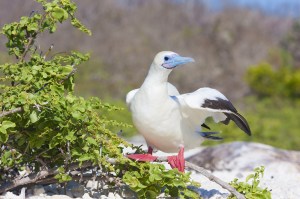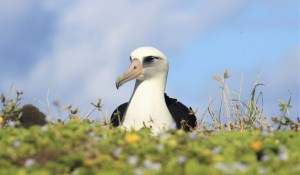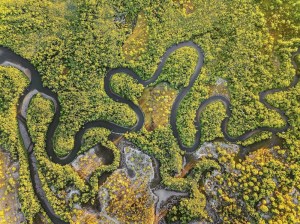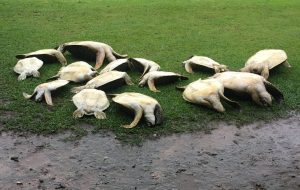Discover stories in Science Briefs
Want to Suppress Coral Disease? Bring Back Sea Cucumbers
By feeding on microbial pathogens in marine sediment, the weird and wonderful sea cucumber can enhance reef resilience by suppressing coral diseases.
Fisheries Trusts Can Advance Sustainability and Resilience Goals
The first national review of community fisheries trusts in the U.S. shows they can achieve positive outcomes for fishing communities and marine ecosystems.
Freshwater Migratory Fish are in Trouble All Over the World
The Living Planet Index reports a staggering 81% average decline in global freshwater migratory fish populations since 1970.
When Sea Cucumbers Spawn, Where Do Their Larvae Go?
New research on sea cucumber genetics indicates that locally managed marine areas are a good way to protect this fishery for communities.
New Study Finds People and Nature Thrive With Diversified Farming
A new global study finds that the benefits of diversified agriculture are abundantly clear, whether for food security, biodiversity or the bottom line.
Overlooked ‘Albedo’ Effect Should Be Factored into Tree Cover Restoration Decisions for Climate
Albedo changes can reduce the climate benefit of tree planting, but new research helps identify areas with the greatest climate-cooling potential.
Want Resilient Coral Reefs? Bring Back Seabirds
Eradicating rats and restoring seabird populations could increase coral reef resilience to climate disturbances.
Running the Numbers on Global Seabird Restoration
A new database of global seabird restoration projects allows scientists to analyze trends and provides a tool for practitioners looking to effectively restore seabirds and coastal ecosystems.
Empowering Communities with Solar
The ongoing transformation of the U.S.’s energy systems creates a compelling opportunity to build the energy infrastructure of the future.
Restoring Old-Growth Forests in the Pacific Northwest: Lessons from TNC’s Ellsworth Creek Preserve
Scientists are evaluating 15 years of forest management at TNC’s Ellsworth Creek Preserve to inform large-scale forest restoration efforts.
Mapping the Planet’s Critical Areas for Biodiversity & Nature’s Contributions to People
New science points to areas where conservation can provide 90% of nature’s contributions to people and meet biodiversity goals.
Sea Turtles Are Under Threat from Small-Scale Fisheries
Free divers are fishing turtles at unsustainble levels in the Solomon Islands.











